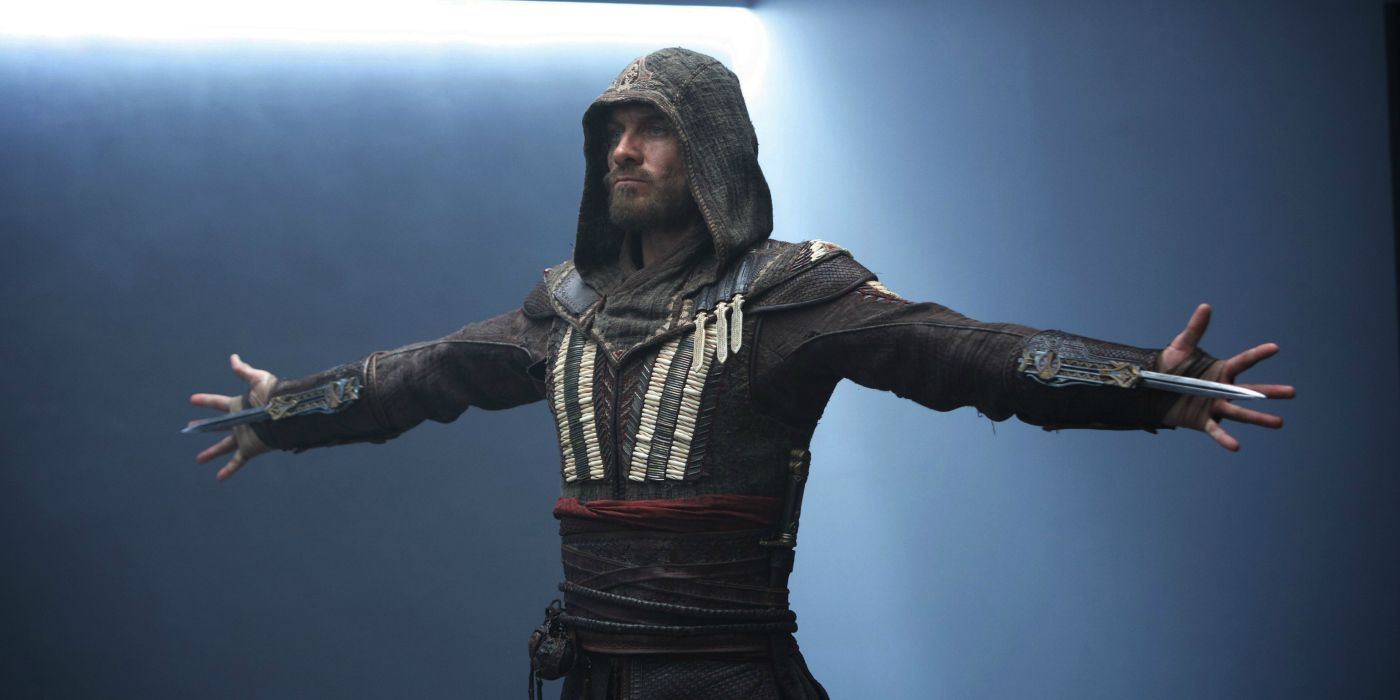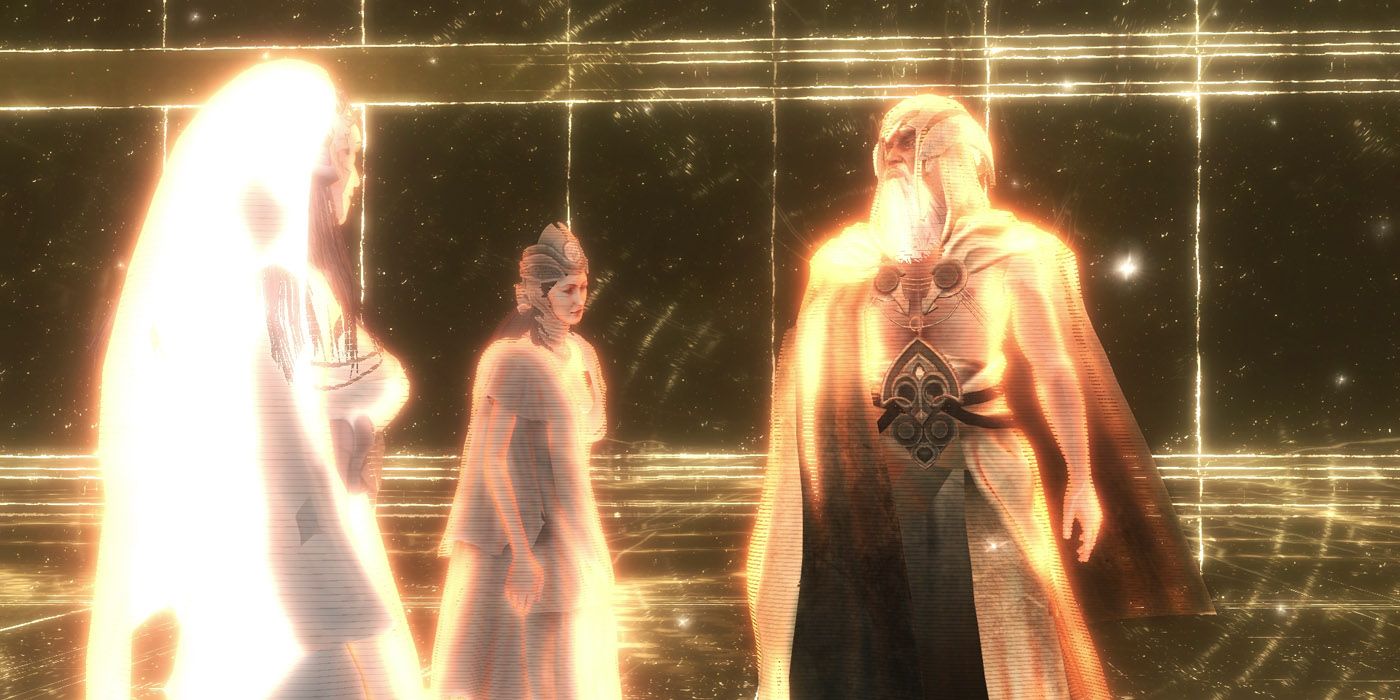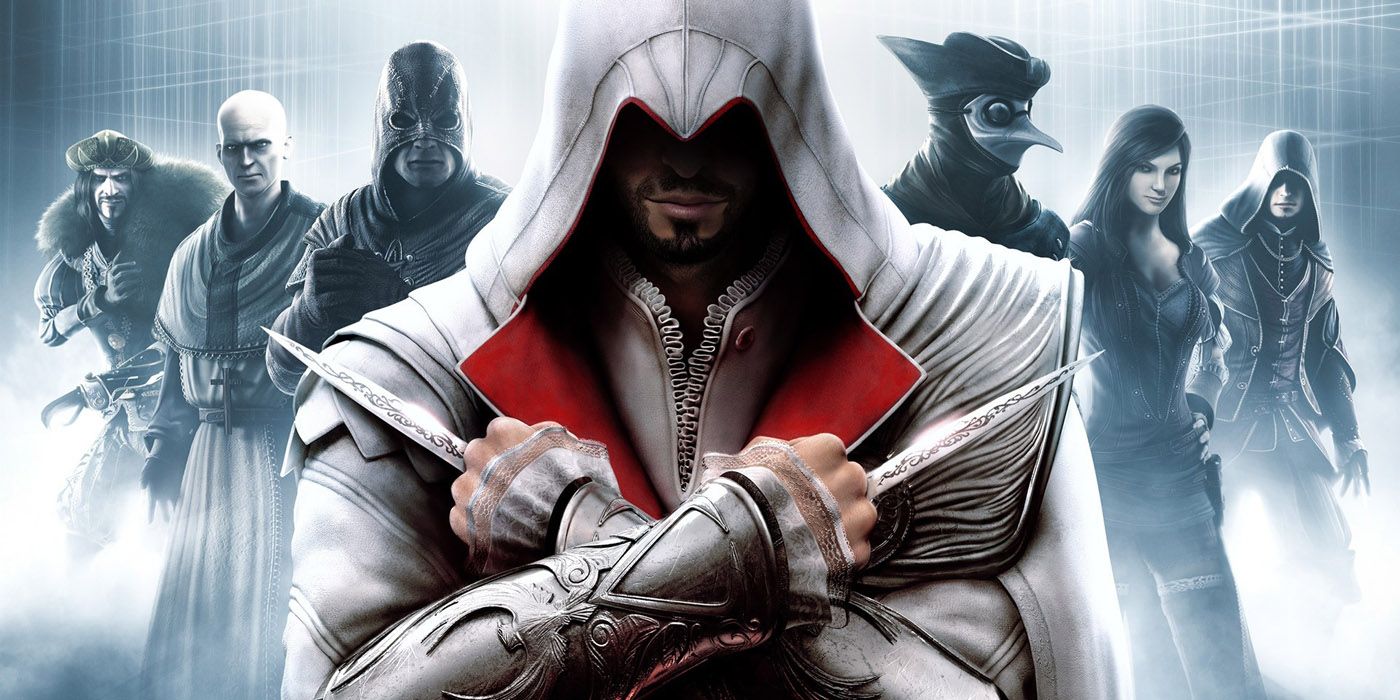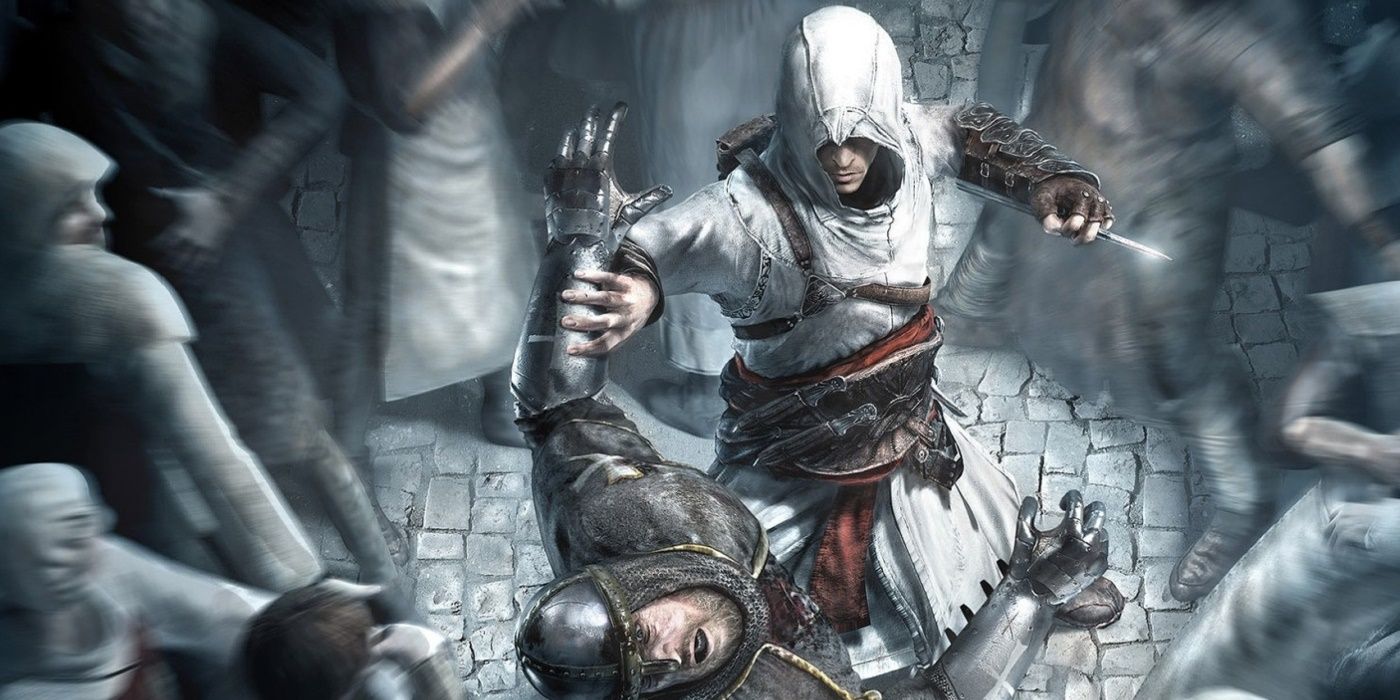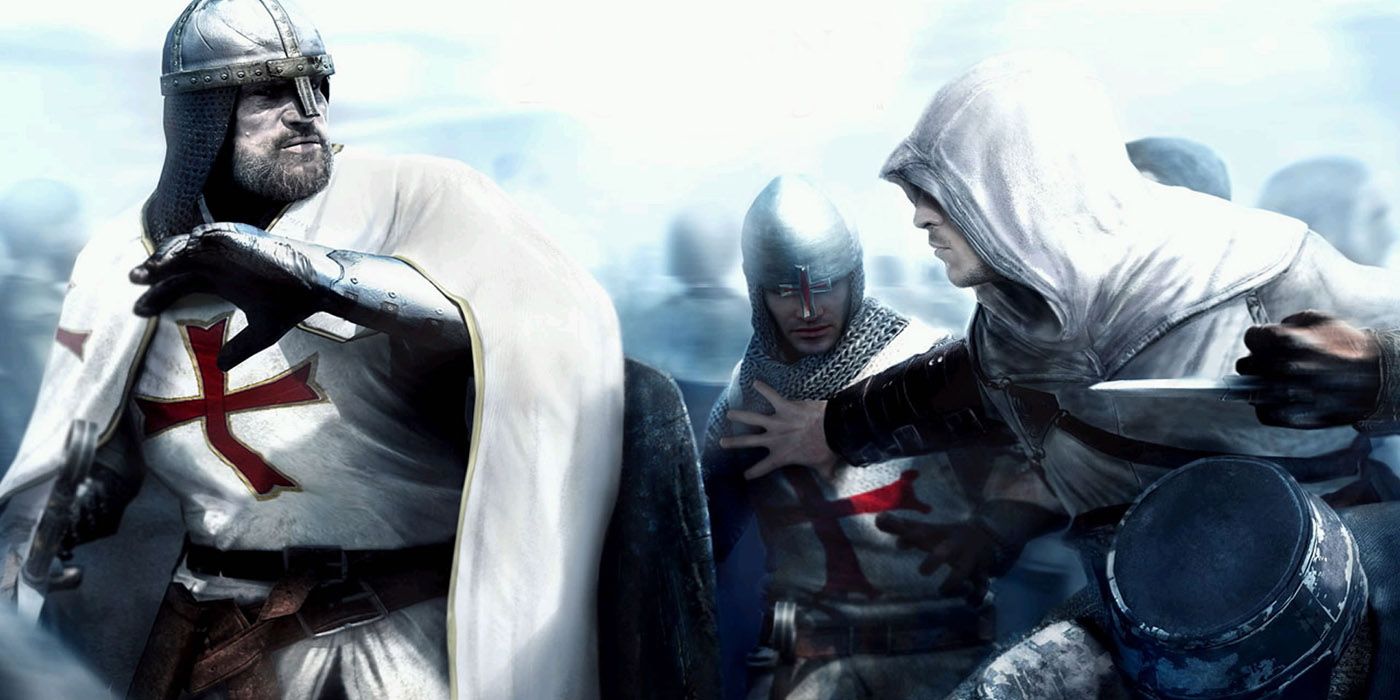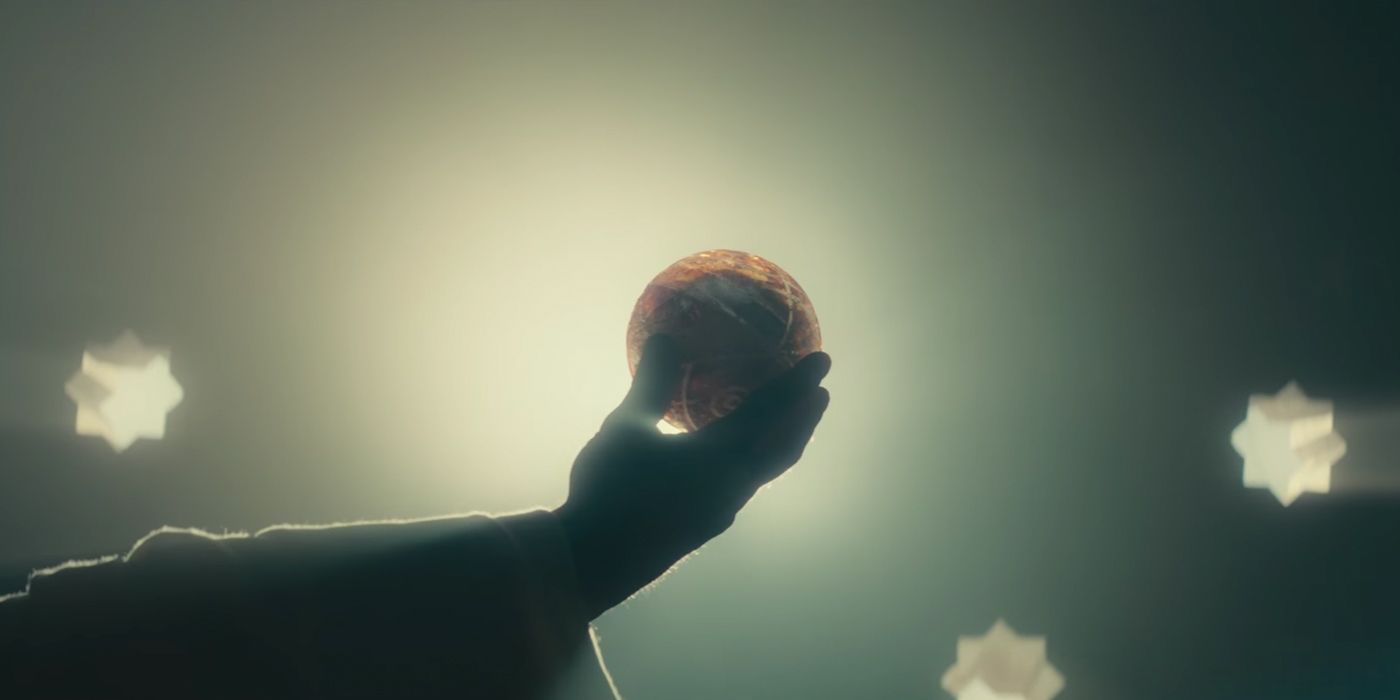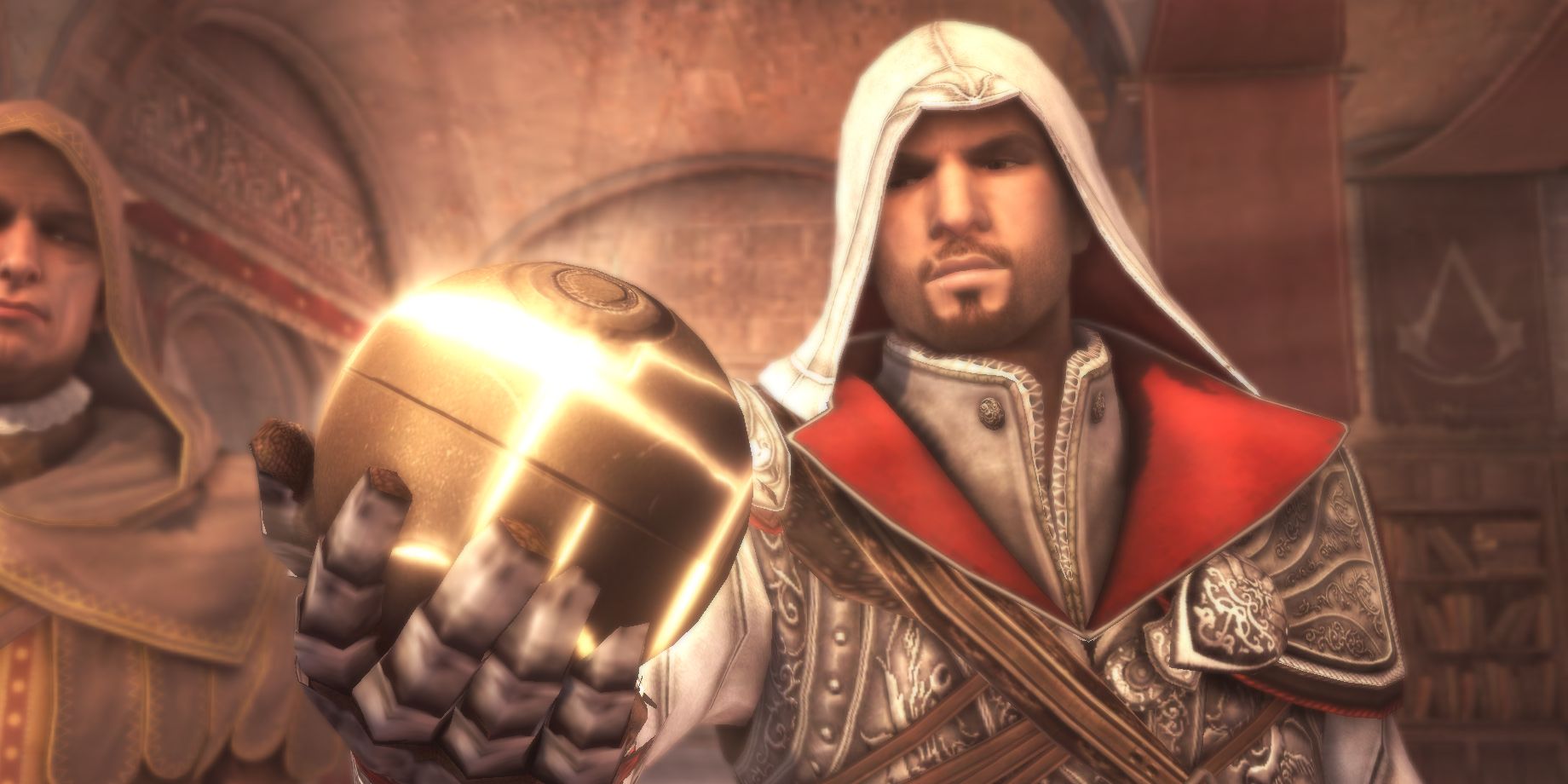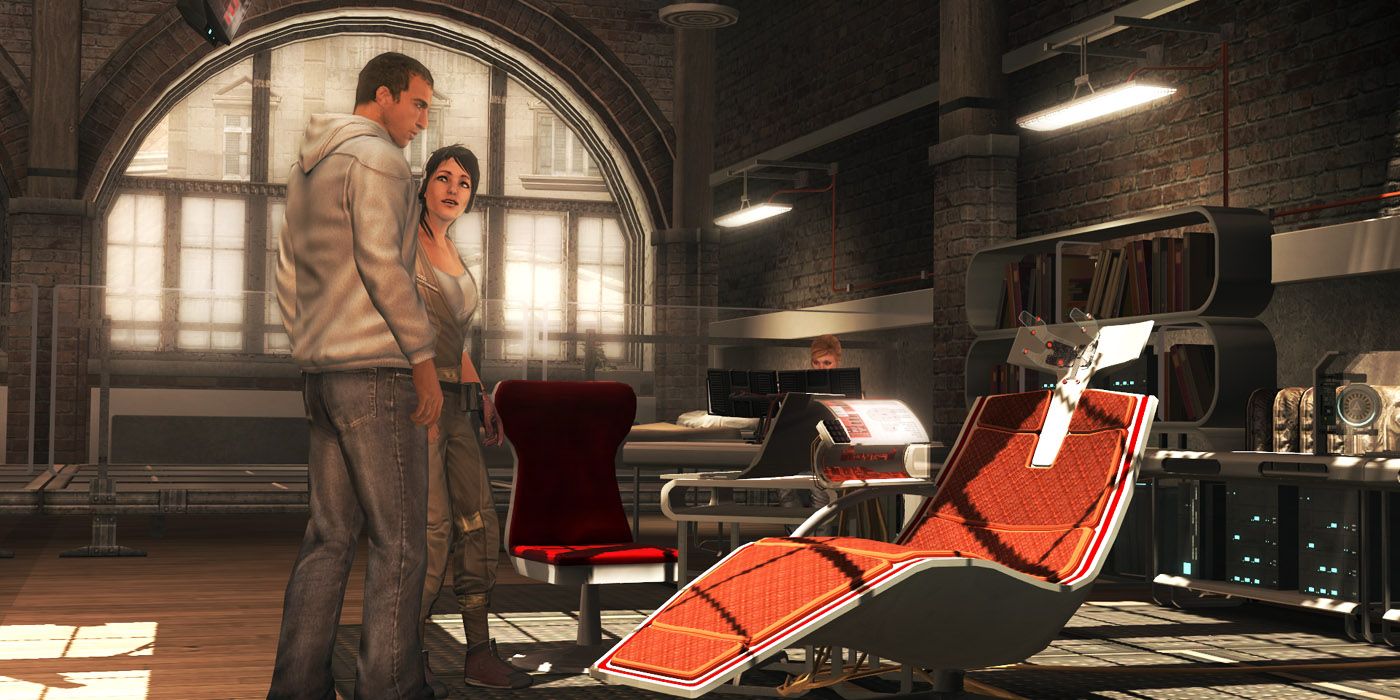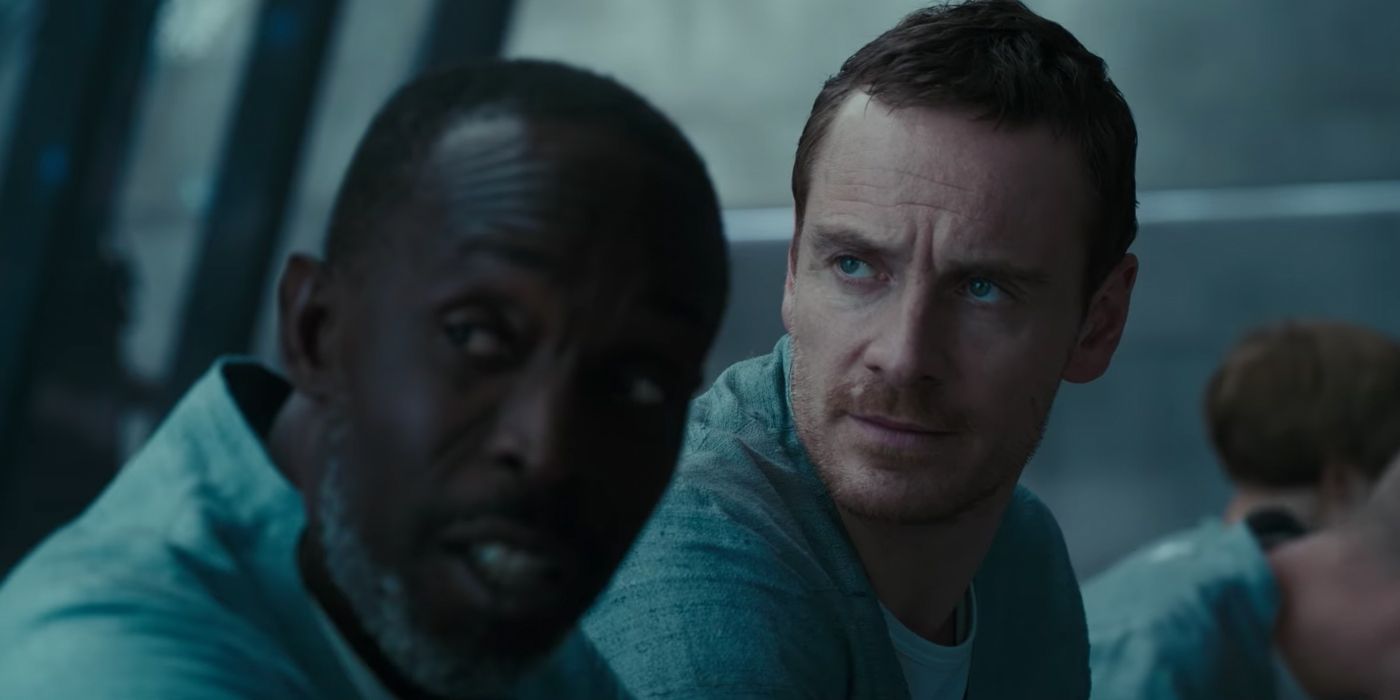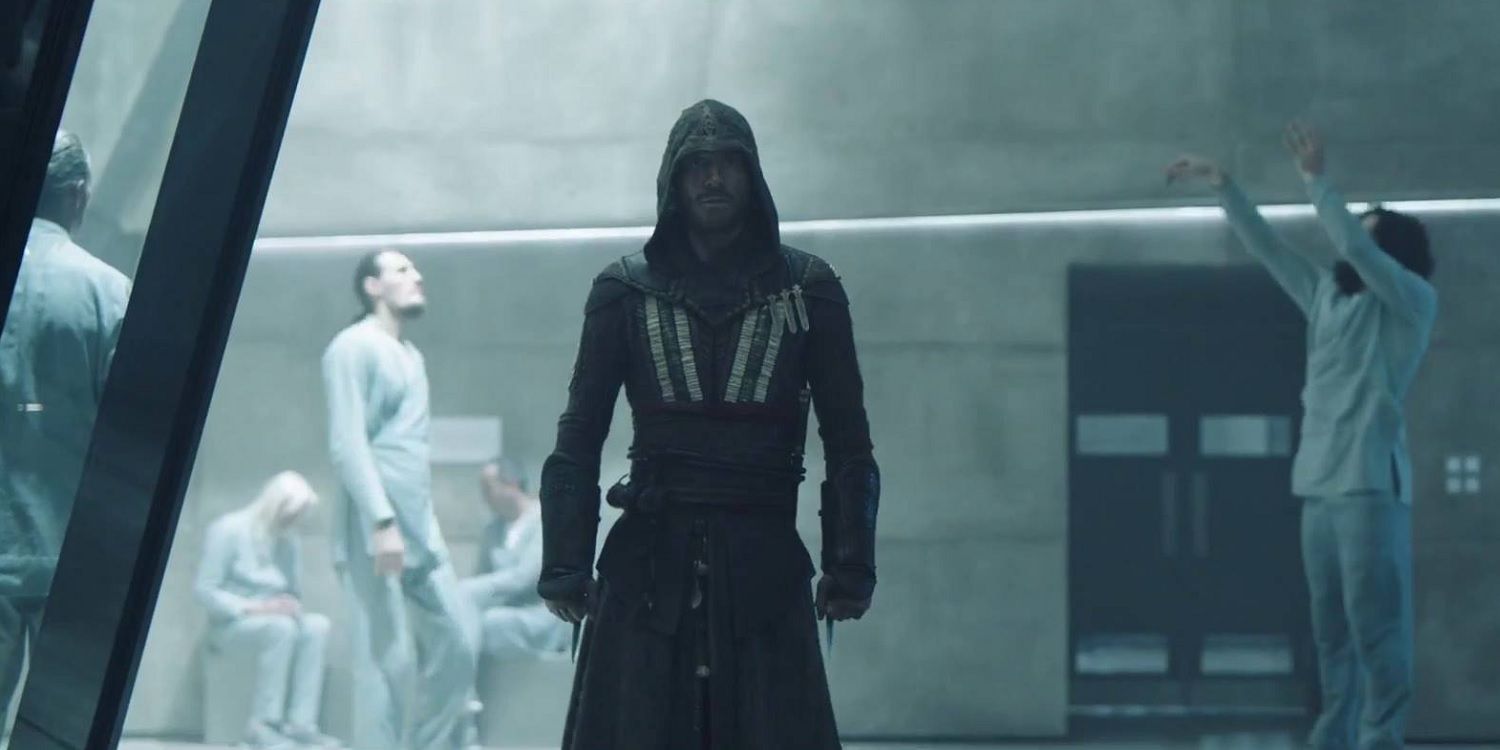NOTE: This article contains SPOILERS for Assassin's Creed
-
It's been a long time coming, but the video game movie world finally has a film crafted under the leadership of the creators who conceived of the premise in the first place. That fact makes Justin Kurzel's Assassin's Creed a tentpole film in the genre, regardless of how it may succeed or fail - for now, it does so with the rich history and mythology of the franchise's games behind it. While that may seem like even more pressure or weight resting on the film's narrative, it also means fans have plenty of other places to look for explanation or elaboration on the movie's world.
The star of the film, Callum Lynch (Michael Fassbender) joins a long history of modern-day men venturing into the genetic memories of their Assassin ancestors. In the process, Lynch discovers powerful forces conspiring against (and for?) him in a battle that has been raging since the dawn of mankind. Audiences are given a doorway into the world of the Assassin Order through Callum's ancestor, Aguilar de Nerha - but there's more history fueling the war between Assassins and Templars than a single film could ever hope to explain.
You won't need to read the many comics, novels and online encyclopedias, or play your way through a dozen video games to get caught up. Just sit back and enjoy our breakdown of Assassin's Creed: The Assassins Guild & History Explained.
The Birth of The Assassins
The actual origins of the Assassin Brotherhood go back thousands - tens of thousands - of years before recorded history, and delving into it means biting off a serious chunk of mythology. We'll explain all that a bit later in our breakdown, but for clarity's sake, the story begins in an age before time when humans served god-like masters. Whatever names you want to call them, be they Roman, Greek, or Hindu deities, the time came when humans rose up against their oppressors and won their freedom.
What followed was a massive disaster that left only human beings standing, beginning the millennia-long struggle of building a new world from the rubble. And as those humans spread and multiplied, it soon became clear that war, conflict, manipulation and domination were just as likely to come from humans as their former masters. In response, members of the human race began to step forward to solve the problem the best way they saw fit. And, no coincidence, these humans did so with some considerable... gifts, since they were actually descendants of those former, 'divine' rulers who had mixed with humanity.
Some of these lucky few succumbed to the temptation of power and influence they were able to wield, while others took a more noble, altruistic path: to protect the freedom of every human being in the pursuit of peace. Doing so unavoidably meant removing (killing) those who stood against such aspirations, and so they acted throughout the course of human history to guide humanity one casualty at a time. Until the Middle Ages arrived, branding them "Hashashin" - Assassins.
A War of Philosophy
Since the actual formation of the Assassin Order, as it came to be known, was based on a philosophical belief in opposition to the power-hungry or manipulative, the group's philosophy is both the hardest to communicate, and the most important. While their opponents believed that humanity existed to be led, and required masters to guide it from chaos to order, the Assassins denied such universal truths. Human nature was limitless, laws were conceived of and executed falsely, and the only path to peace lay through free will.
It's a notion summed up in the actual 'Assassin's Creed', the only motto or teaching used to encompass the Order's core mission:
"Nothing is true. Everything is permitted."
That's not exactly a clear creed, but it's meant to communicate two ideas. First, "nothing is true" isn't a plea for ignorance or an endorsement of nihilism, but an application of reason and logic to the world. Since no law, belief, fact, or "truth" is created in a vaccuum, but subjectively by and for people, such limitations are false or bound to be misused. And while "everything being permitted" might sound like a more villainous tenet than a heroic one, it's also meant to convey that the Assassins follow no rule, restriction, or law... it's kind of their biggest rule.
That contradiction isn't lost on the game's storytellers, or the characters themselves, but used to show just how unique an organization the Assassin Order really is. By reciting the creed, they don't remember the code or beliefs they're following, but remind themselves that they only remain free themselves by refusing such bonds. They follow the march of humanity for their missions, eliminating those who hold fast to one absolute truth - those who seek to tell humanity what is and is not permitted.
Though the Assassins had followed this idea since the dawn of time, it was only in the 11th Century that the tenets were recorded by the Order's first recorded leader. A century later, during the Third Crusade in the Holy Land, it was leader Altaïr Ibn-La'Ahad (star of the first Assassin's Creed game) who reformed the Order into the version that survived to the modern age. Beyond the maxim, the Assassins embraced three methods: they would not harm the innocent, they would act among the crowd unseen, and they would protect the Order's secrecy at all costs.
The result was an Order that was more secretive, more cunning, and more altruistic than ever before. Under Altaïr, the Order was spread across the globe instead of one centralized region of power. Within a century, Assassins Guilds could be found across Asia and Europe - including the Spain cell explored in the film - and eventually, reaching the New World. And every step of the way, the Order either followed or was followed by their sworn enemies from humanity's first days: the Templars.
The Assassin-Templar War
When the rising up of humanity against their divine masters was said and done, and the remains of the 'First Civilization' on their way to extinction, the survivors had a choice to make. With the future wide open, the issue of where to go, and how best to use the technology left over from their technologically superior masters came to the forefront. You see, these elite humans were the same ones blessed with Hybrid DNA - part human, part 'god'. That meant that, aside from some nifty powers, they were immune to the technology their masters had used to manipulate and control the vast majority of humans... so were free to use it for their own mission.
Both hoped for a peaceful future for humanity, but only some of these Hybrids believed that using any of the technology to control their fellow humans was wrong, and an obstacle to true freedom and peace for their people. While those people would go on to become the Assassins, their opponents would eventually take up the title of Templars, and begin a covert war with their former brothers and sisters that would last thousands of years.
If you're wondering just how far back these factions go, the Assassin teachings claim that the Templars were specifically the descendants of Cain (as in the Biblical son of Adam and Eve, who killed his brother, Abel). Not much is actually known about the war in the millennia that followed, but once human history started to be recorded, the fingerprints of the Assassin-Templar War were all over it. Pick out a famous historical figure from the Ancient World - Cleopatra, Alexander the Great, Xerxes - and odds are, Templars and Assassins were involved. The pattern repeats itself, with famous leaders rising up to enslave or dominate vast expanses of the Earth secretly supported by the Templars, and killed in secret by the Assassins.
Time and again, the two continued their dance of trying to control human progress, and allowing it to grow naturally. Until the arrival of the Common Era and the discovery of the First Civilization's long-forgotten technology changed the game.
The Pieces of Eden
With the history and war between Assassins and Templars out of the way, we can dig a bit deeper into the First Civilization that actually raised humanity up from their humble beginnings. These godlike beings - also known as Isu - selected another Earth species to use as a slave workforce, advancing their evolution into Homo Sapiens through their otherworldly technology. If they were as wise as they claimed to be, they might have predicted that the humans who outnumbered them, and the Human-Isu hybrids they were creating, would possibly grow immune to their control.
It was just one of a few disasters the First Civilization did not see coming, but a select few were smart enough to realize that a slave rebellion was the least of their problems. Instead, these Isu used their sixth sense of foresight to see a coming catastrophe (a solar flare) that would scorch the planet, and constructed caches of Isu technology across the world. It was these Vaults that would eventually become hidden treasures for both modern Assassins and Templars, and the objects of Isu tech - dubbed "Pieces of Eden" - left behind that would elevate the Assassin-Templar War to a boiling point.
The staffs carried by Alexander the Great, the Czar of Russia, and even the Catholic Pope were all revealed to be pieces of Isu technology in the Assassin's Creed lore, but it was the "Apple" that the hybrids Adam and Eve used to escape (get it?) that became the most important in the game series. Used to open the eyes of Adam and Eve and begin the rebellion, used to part the Red Sea, and used by a certain Biblical star to turn water into wine, the Apple promised the ability to lead, dominate, and control millions if it fell into the hands of the Templars.
But again, the Apple was just one of many, which in turn were only a few of the many Pieces of Eden scattered across the globe, forgotten for millennia. And as the Templars turned their mission to using said objects to gently (or not so gently) direct global politics, or World Wars for their own ends, the Assassins tried to keep pace. Until we arrive at the modern world of the Assassin's Creed movie and video game universe, and the momentum has completely swung to the side of the Templars.
The Animus: The Modern Battlefield
The Assassin-Templar War may stretch back longer than history, but when modern audiences and characters enter the story, the war has almost already been won. Both Assassins and Templars had spread into vast underground organizations, inducting and training their descendants to continue to battle generation by generation. That was, until the Great Purge in the year 2000, when the Templars succeeded in inserting a sleeper agent into the Order's ranks, acquiring the knowledge of every Assassin Guild around the world, and assassinating their leader. The fallout left only a scattered number of Assassin cells hunted across the globe, resorting to guerrilla tactics while the Templars dominated the tech industry.
That domination came in the form of Abstergo Industries, the modern face of the Templars. Their most impressive (and plot-relevant) technological breakthrough was the Animus, a device built from Isu tech and refined over half a century into the model seen in the games and film. Allowing the user to access the genetic memories of their Assassin or Templar ancestors, Abstergo had the means to acquire even more power. All they have to do send their own members into the past lives of their ancestors to track other Pieces of Eden lost to time. But since the Assassins were intent on keeping those artifacts hidden, Abstergo began recruiting Assassin descendants to undergo the same procedure, unwittingly leaking secrets to the enemy.
Where The Movie Fits in The Story
Both the video game hero Desmond Miles and the film's hero Callum Lynch fit that mold: born unknowingly into the Assassin Order, but leaving those family bonds behind before their eyes could be opened to the larger conflict. The film follows Callum as just one of many descendants recruited in order to gain access to their ancestral memories (locations and research that would never be avalable to the Templars without eyewitness accounts). Once again, it's Abstergo Industries pulling the strings, and Dr. Alan Rikkin (Jeremy Irons) leading the project, having been mentioned in the video games as one of the upper-echelon members of the Templars.
Callum Lynch also gets to enjoy the newer, and far more elaborate Animus 4.3, no longer requiring subjects to lay prone to access their genetic memories. The film's device is a bit more intrusive - connecting into the subject's spine - but allowing them to act out the movements of their memories in real-time is more likely to keep atrophy at bay (and is a whole lot cooler to watch). Unfortunately for Abstergo - but fortunately for the fans - Callum soon beings to experience the famous 'Bleeding Effect' felt by most long term users of the Animus.
In essence, communing with an ancestor who, thanks to partial Isu DNA, is able to experience a 'sixth sense' and demonstrate a lifetime of training has an effect. Over time, the difference between the memory and the real world can blur, imbuing the modern day subject with the skills of their ancestor. The good news is that it allows the Assassin descendants to live up to their genetic legacy. The bad news is... it can also drive the subject insane.
So, you either turn the tables and bring down the Templars the way your descendants never thought possible... or die trying.

